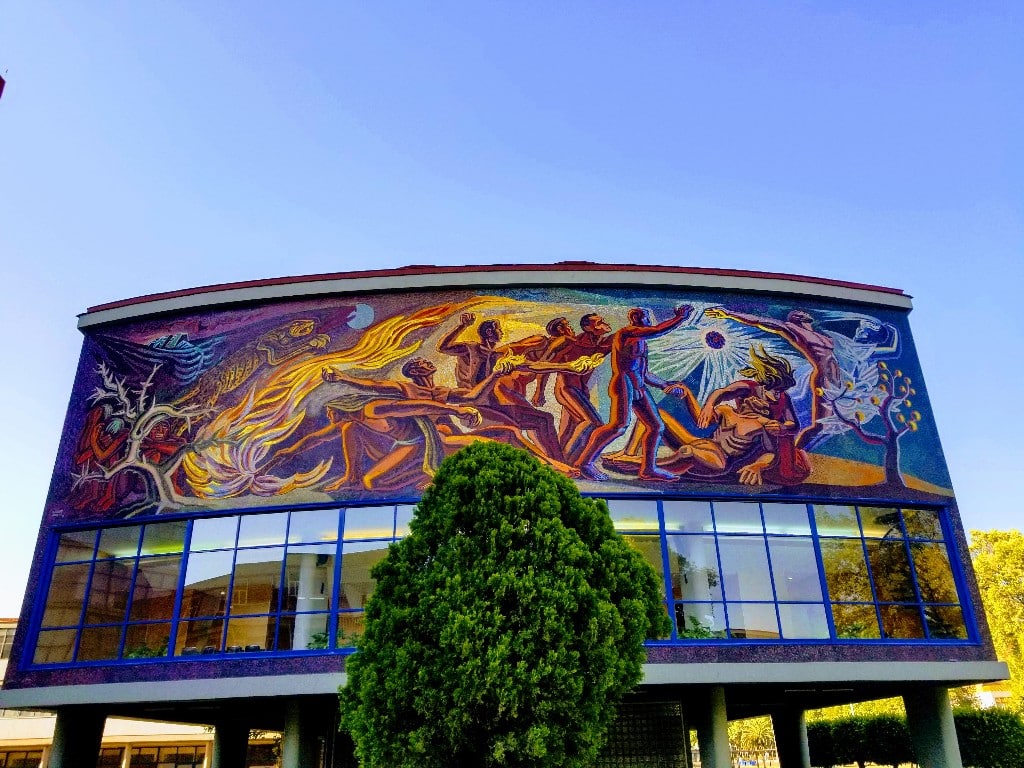During the running tour of the San Angel neighborhood, we ended up on the campus of Ciudad Universitaria, which is one of the largest universities in the world! On the campus, there are several famous murals on the buildings that depict the history of Mexico.
The campus has about 110 murals. Since I was on the campus for about 30 minutes, I only had a chance to see 5 of them.
The Murales
La conquista de la energía, José Chávez Morado. (The conquest of power)
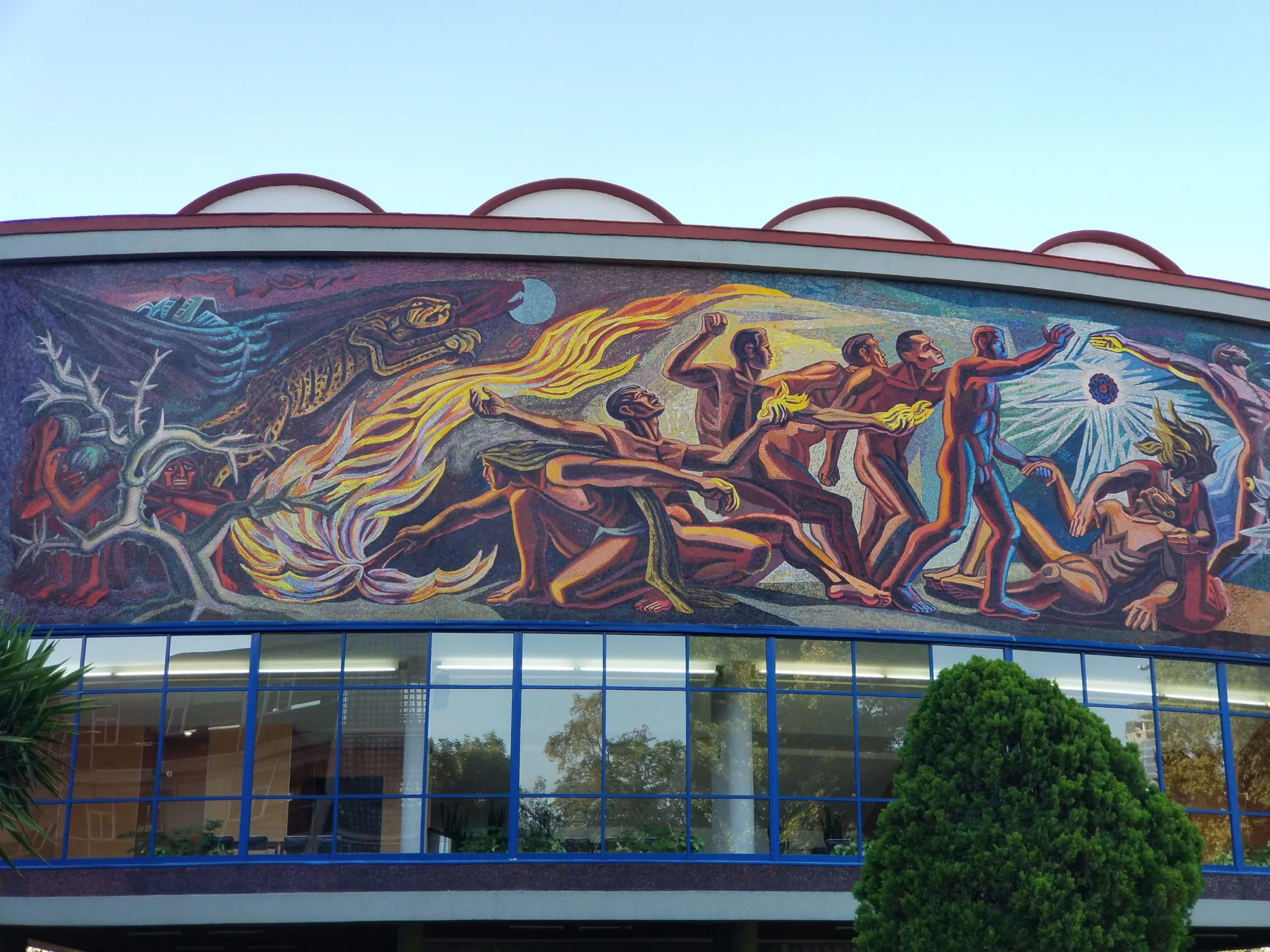
“This mural is a symbolic interpretation of humankind’s struggle for survival and the triumphant discovery of fire.”
The vibrant colors just caught my attention…don’t you think!

Fechas en la historia de México, David Alfaro Siqueiros (Dates in the history of Mexico)
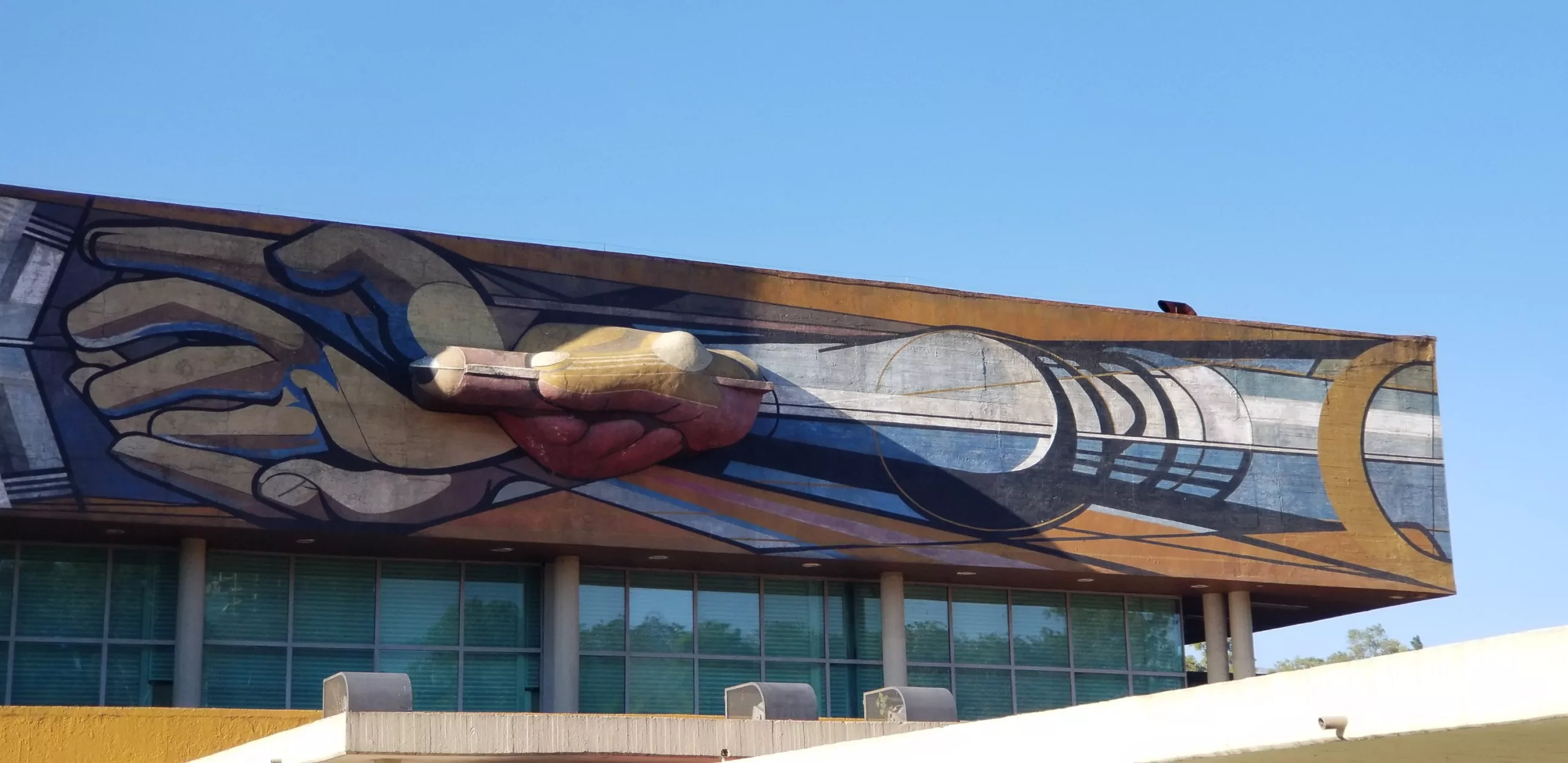
This mural represents an arm with two interlaced hands, a third arm that protrudes and a pencil pointing to an open book. The pages represent some of the most relevant dates in the country which are:
- The Conquest, 1520;
- The Independence, 1810;
- The Laws of Reform, 1857;
- The Mexican Revolution, 1910, and
- Then there is the date written as “19??” which indicates that the artist is suggesting that there could have been another revolution.
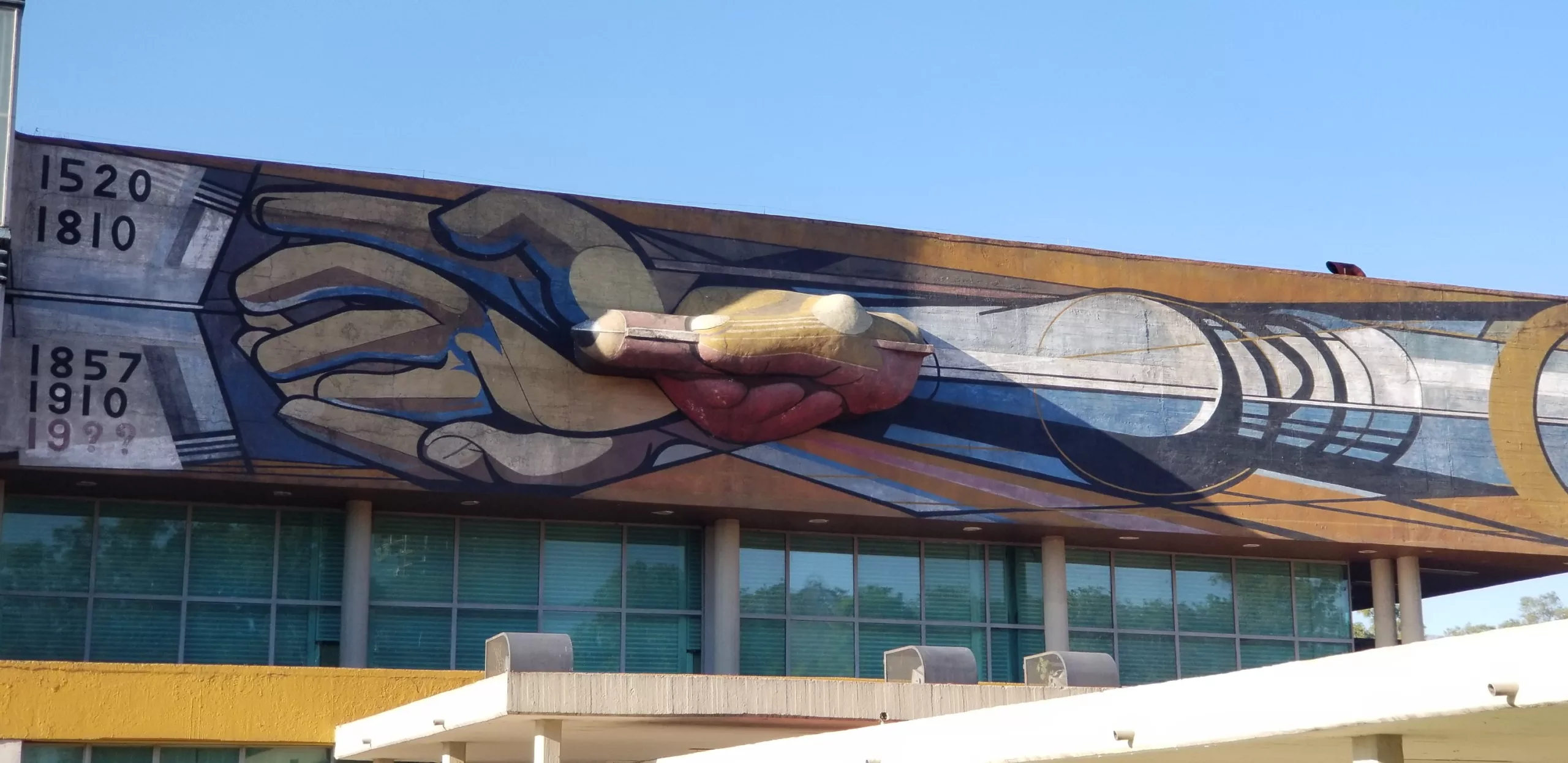
Representación histórica de la cultura, Juan O’Gorman (Historical representation of culture)
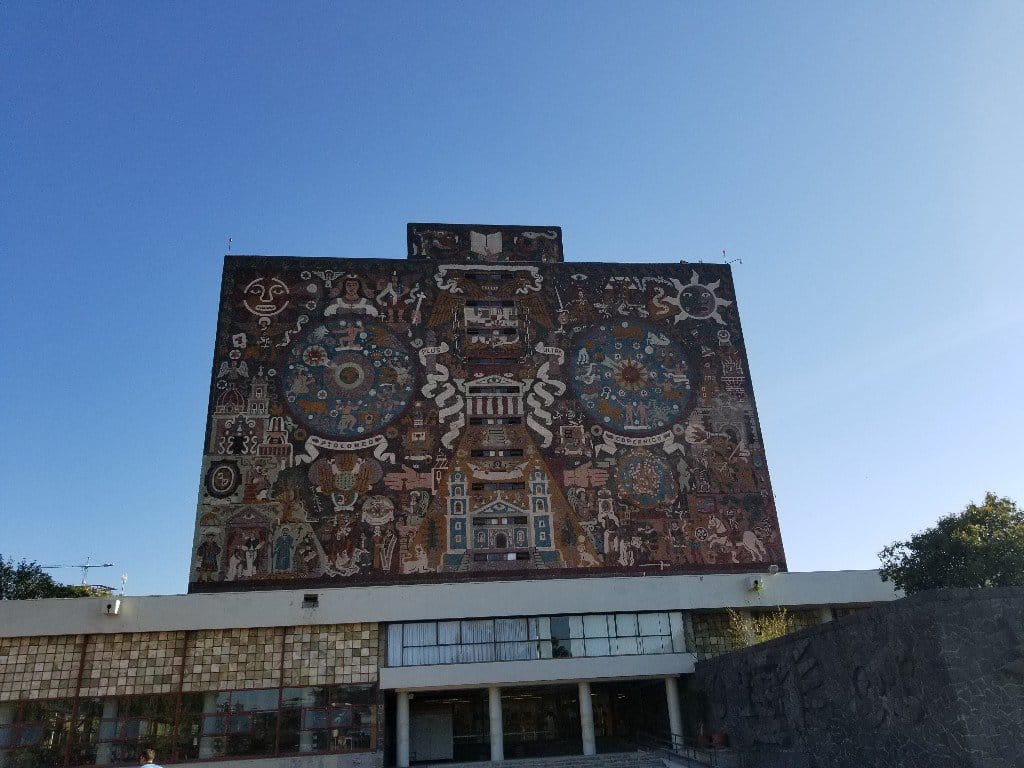
This mural shows homage to Mexico’s cultural patrimony and national history. The building has murals on each side. The north side is devoted to Mexico’s prehispanic past evoking themes of life and death.
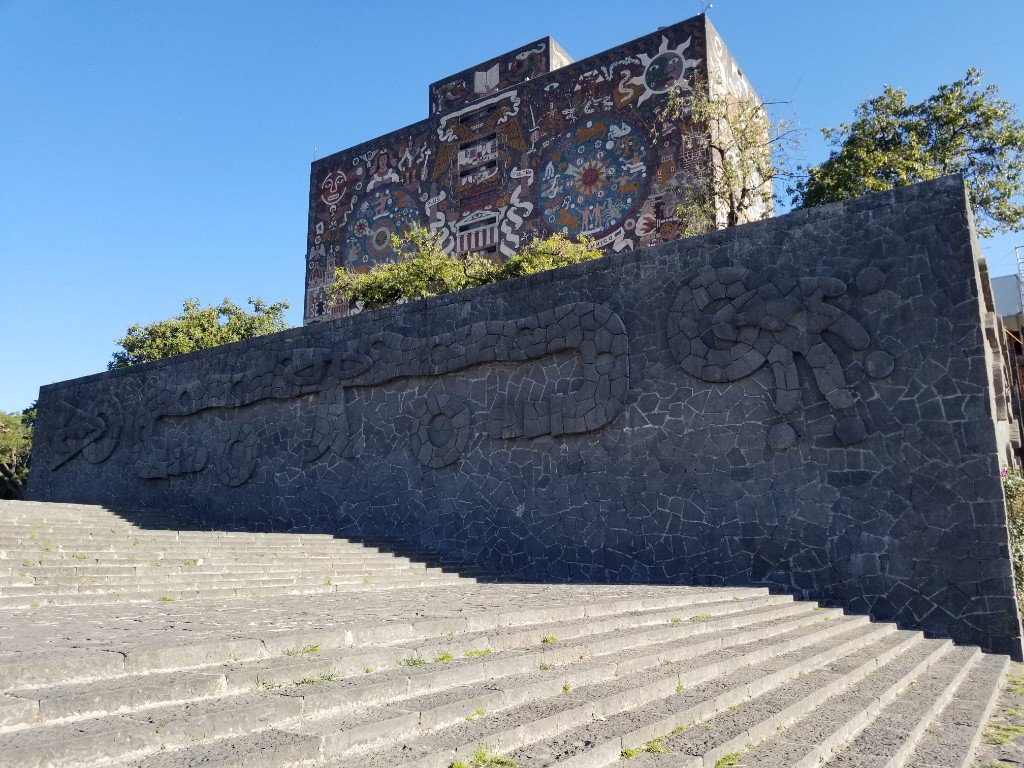
La Universidad, la familia y el deporte en México, Diego Rivera. (The University, the family, and sport in Mexico.)
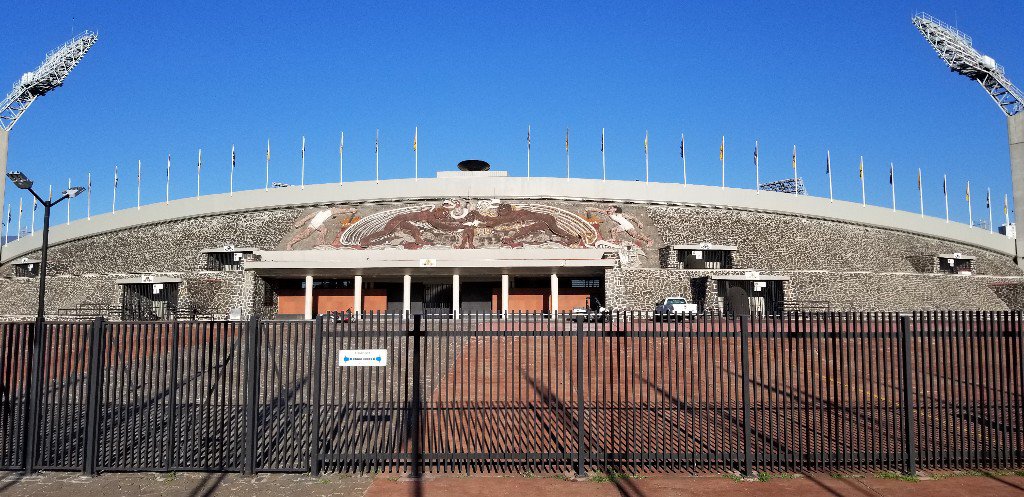
This mural that decorates UNAM’S stadium has several symbolic meanings. The first is
“You see the condor, it even looks like it is flying as if it were a hummingbird on the south side and north of the golden eagle; Mexico is North America, so it is the golden eagle of us and the two birds are biting the sun. That sun means the truth, knowledge, that’s why it’s called the new symbol of the University“
And the second,
“In the face, there are two children fighting in a non-violent event; however, the pigeon/dove is a symbol of peace.”

El pueblo a la Universidad, la universidad para la pueblo. Por una cultura nacional neohumanista de profundidad universal, David Alfaro Siqueiros. (The people for the university, the university for the people. For a national neohumanist culture of universal depth.)
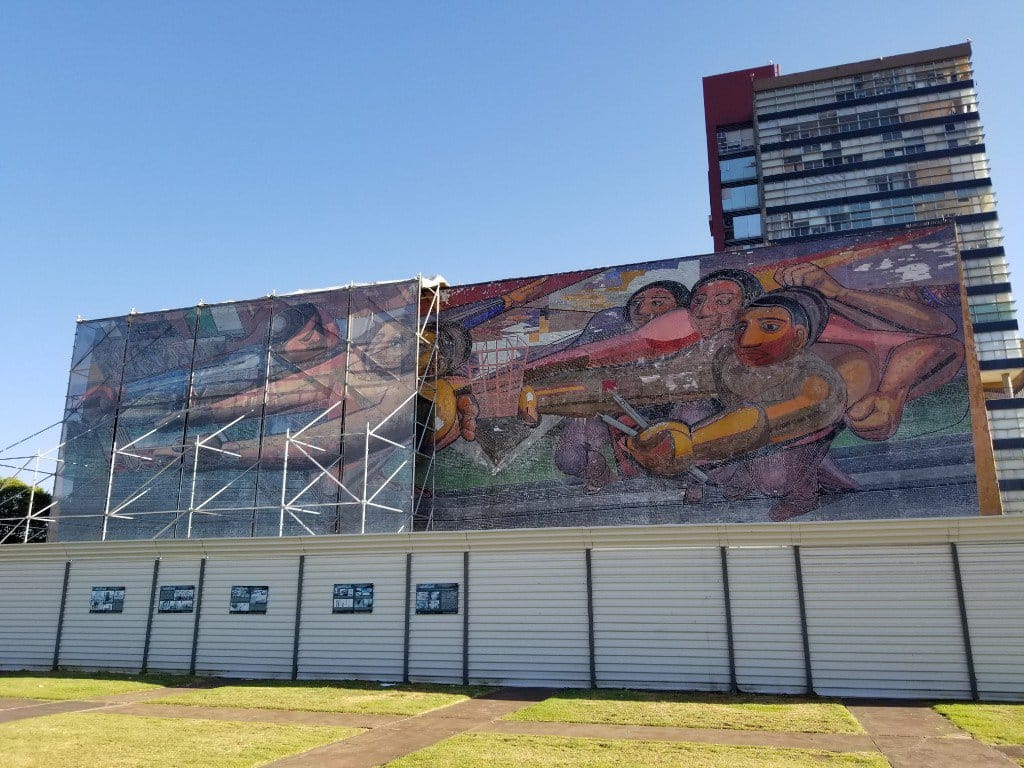
In El Pueblo a la Universidad, the important issue is the pencil. The pencil is being returned to the people because the people gave it to us in one of the other murals. Finally, with the pencil, they are climbing stairs, heading back to their respective pueblos, to use their knowledge for the betterment of their communities.
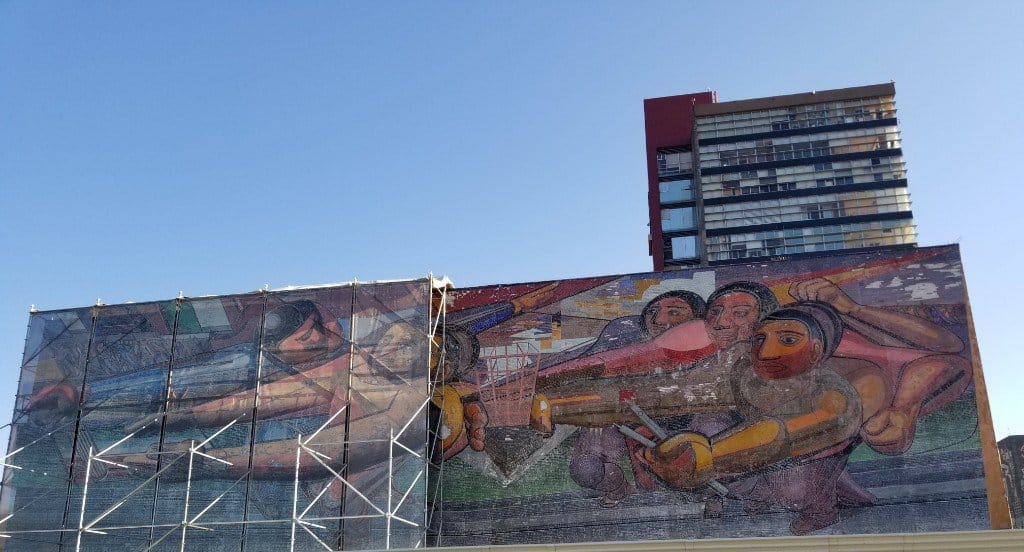
The good news is that you don’t have to do a running tour to see these and other murals. There are several free and paid walking tours offered through the university or tour companies.
Haste la vista!

